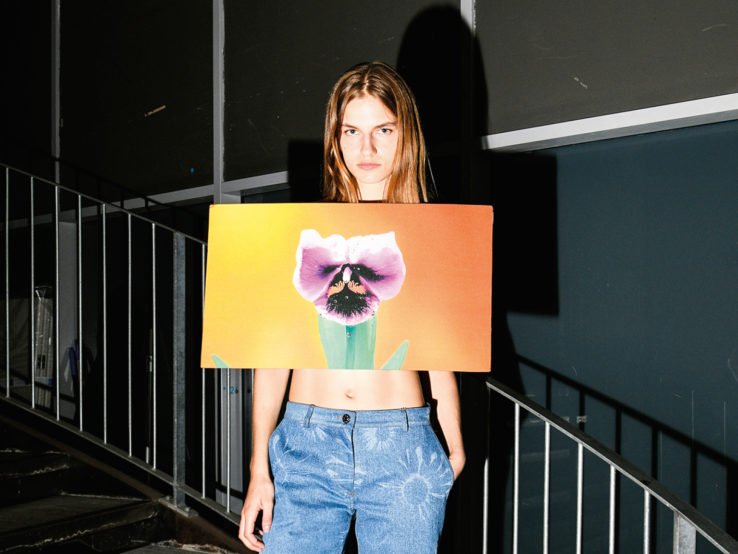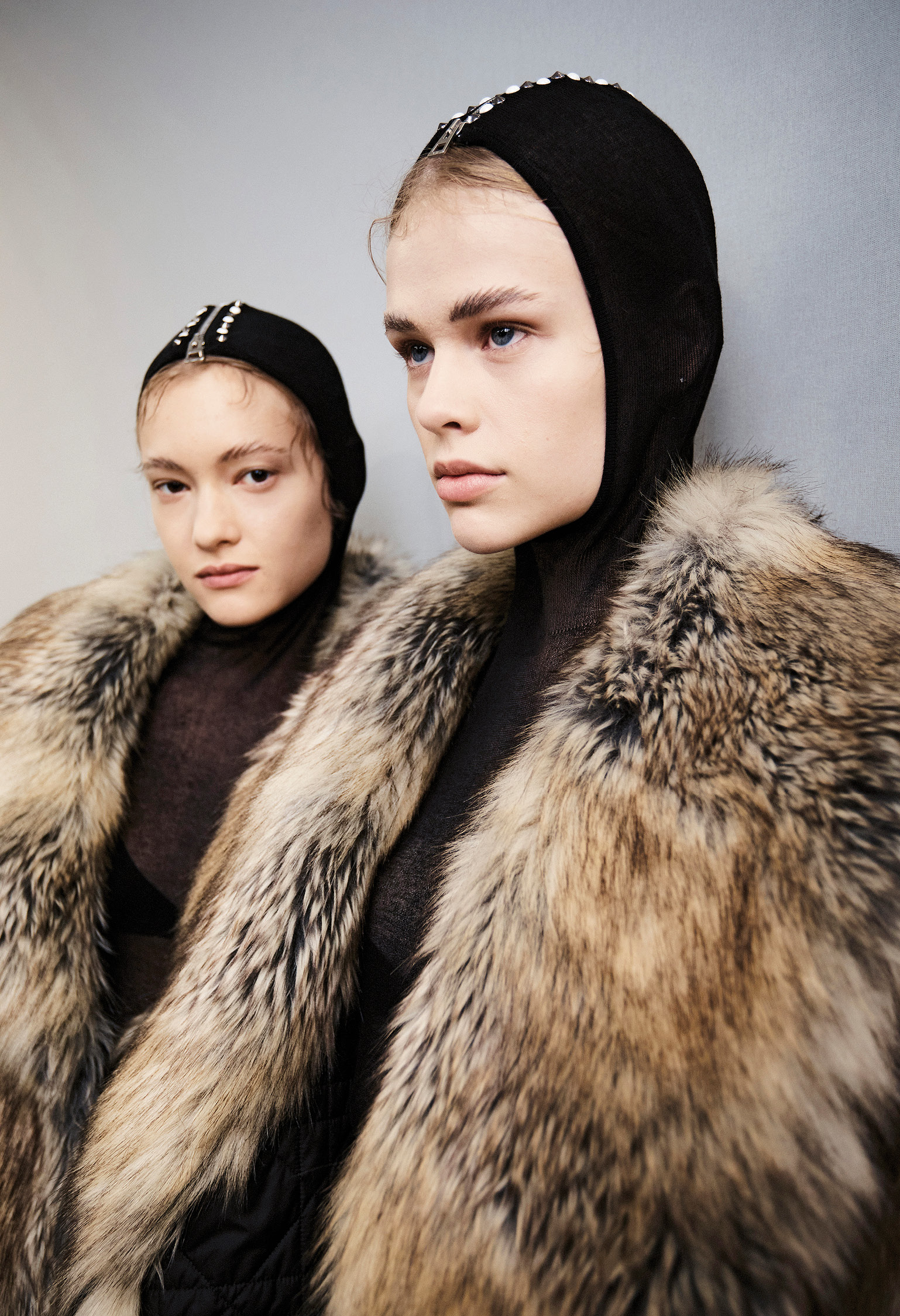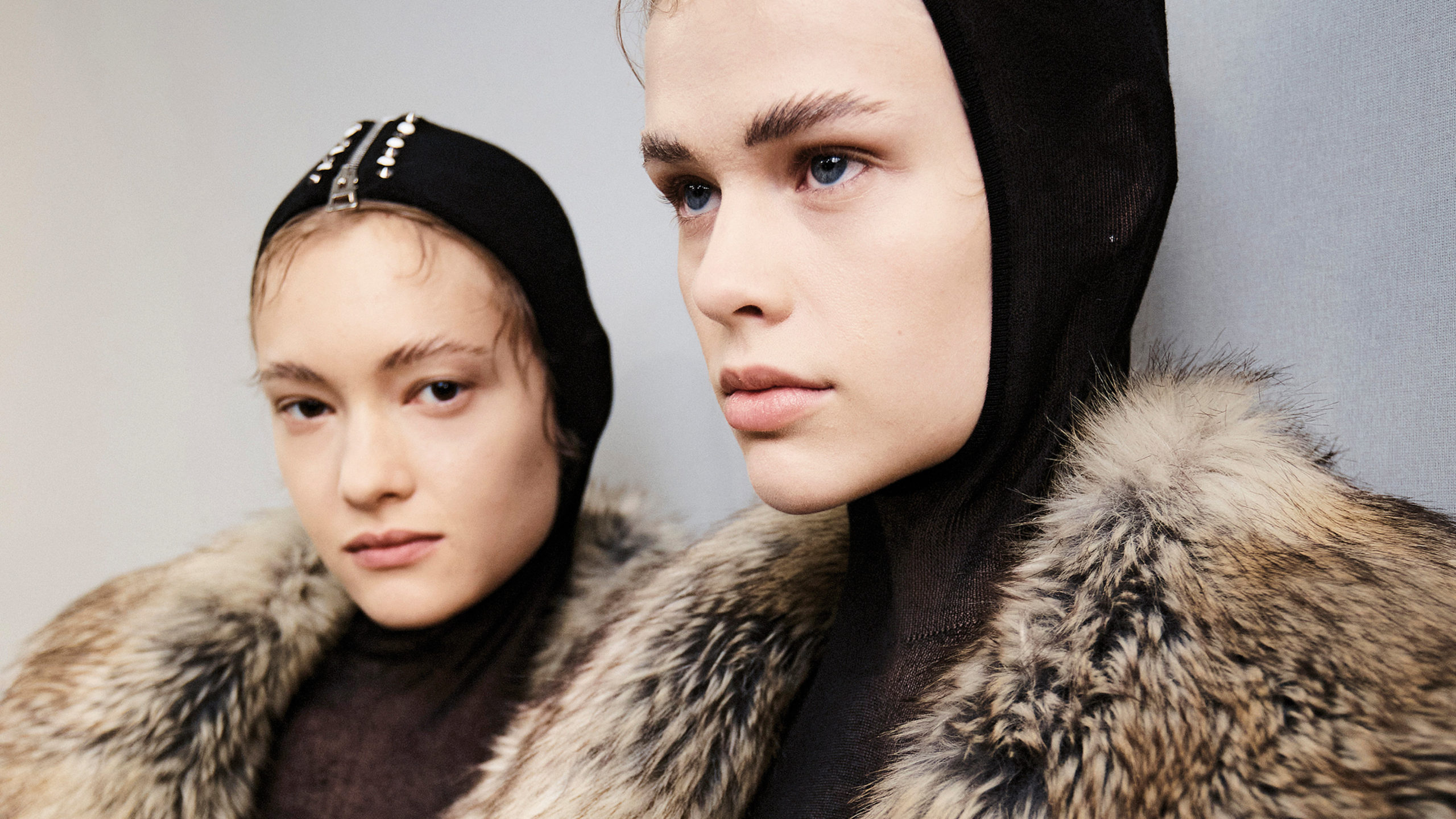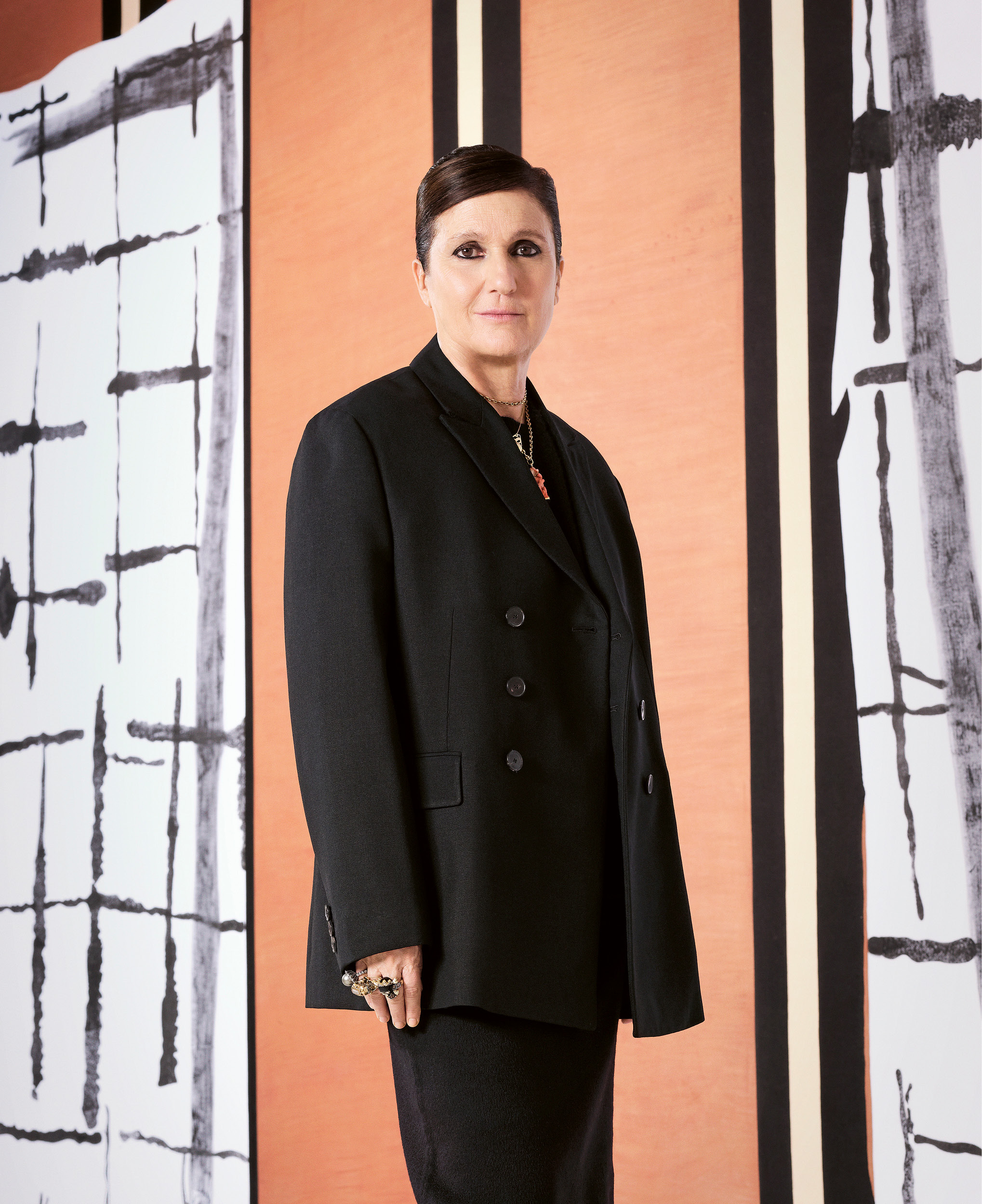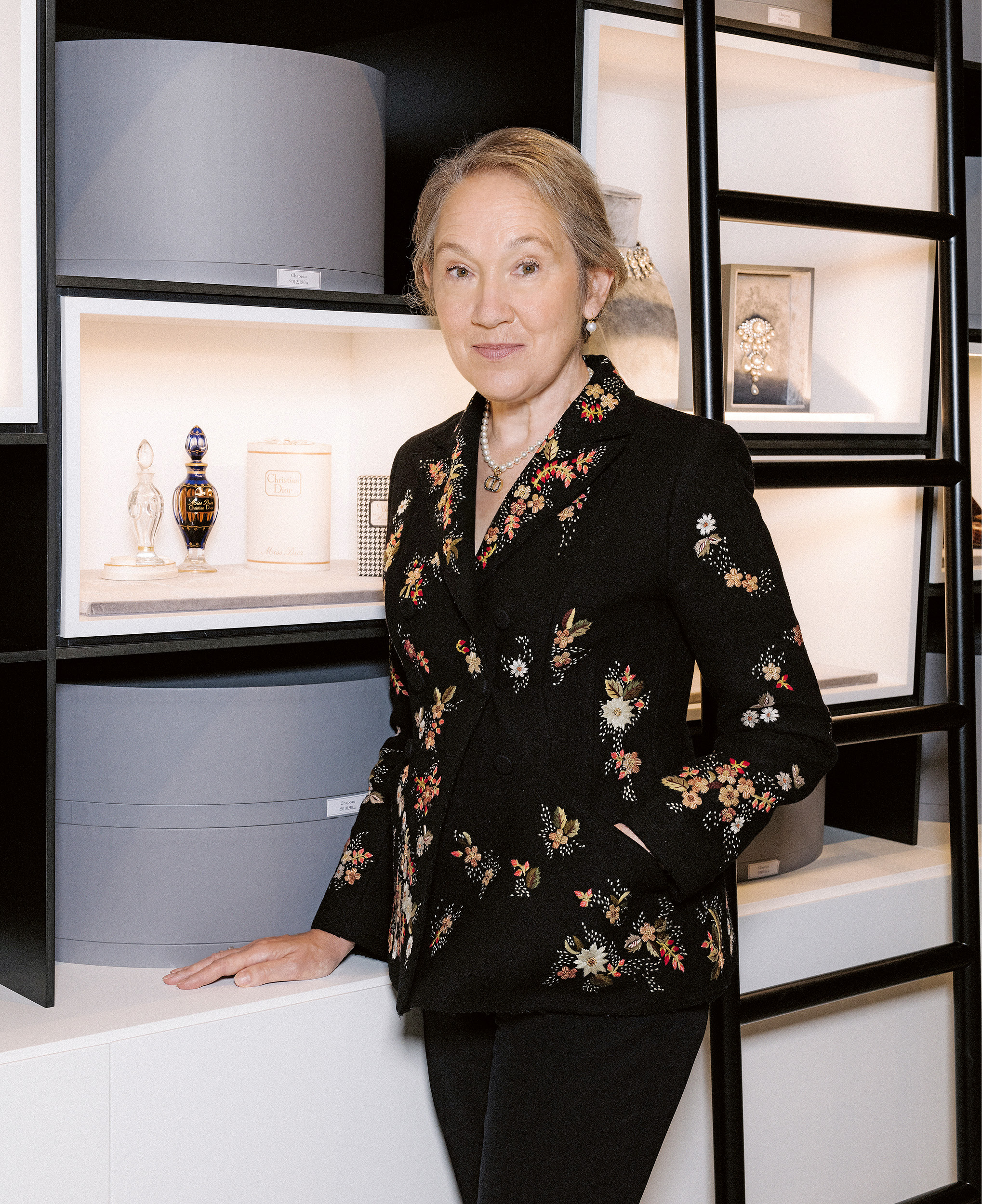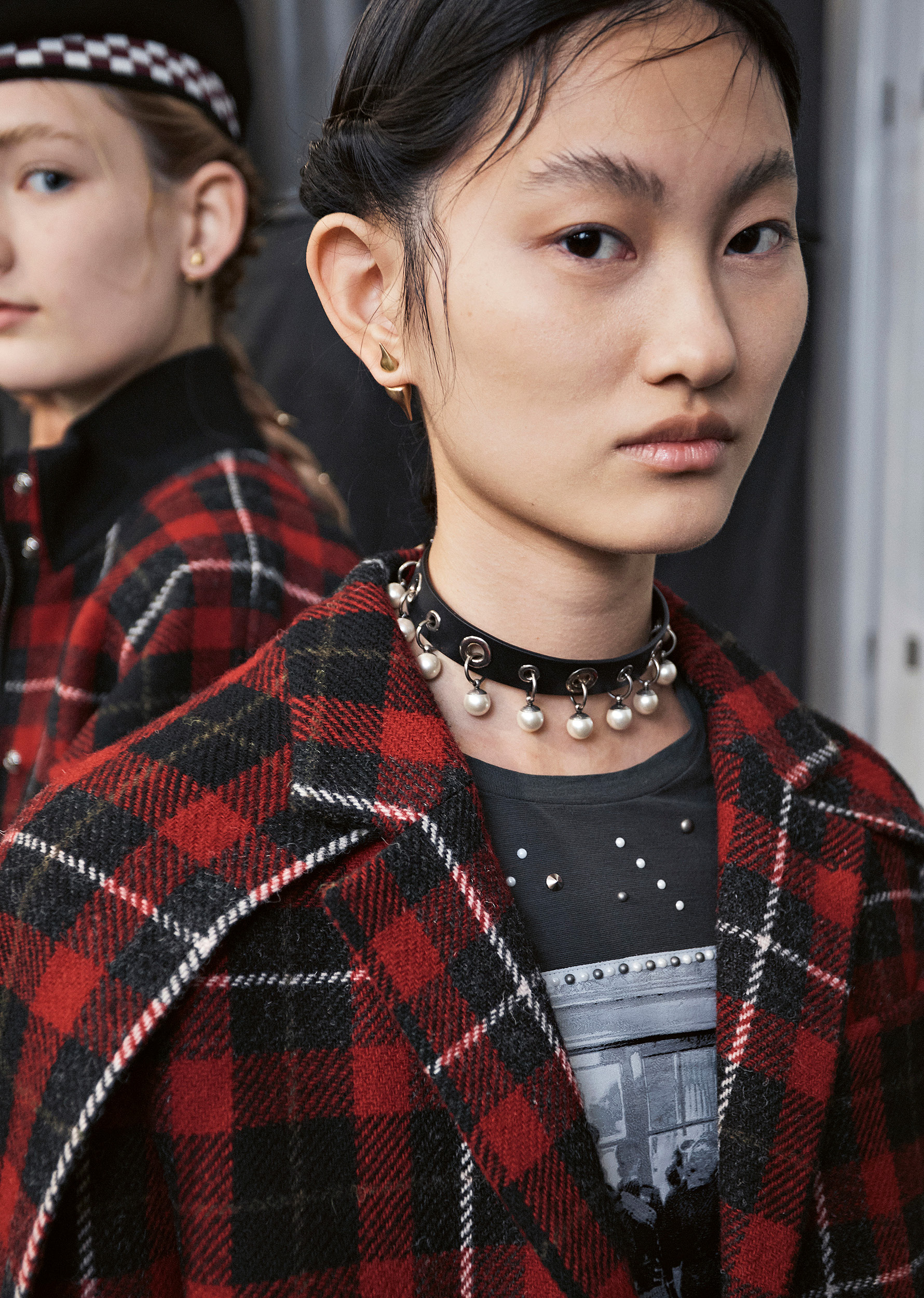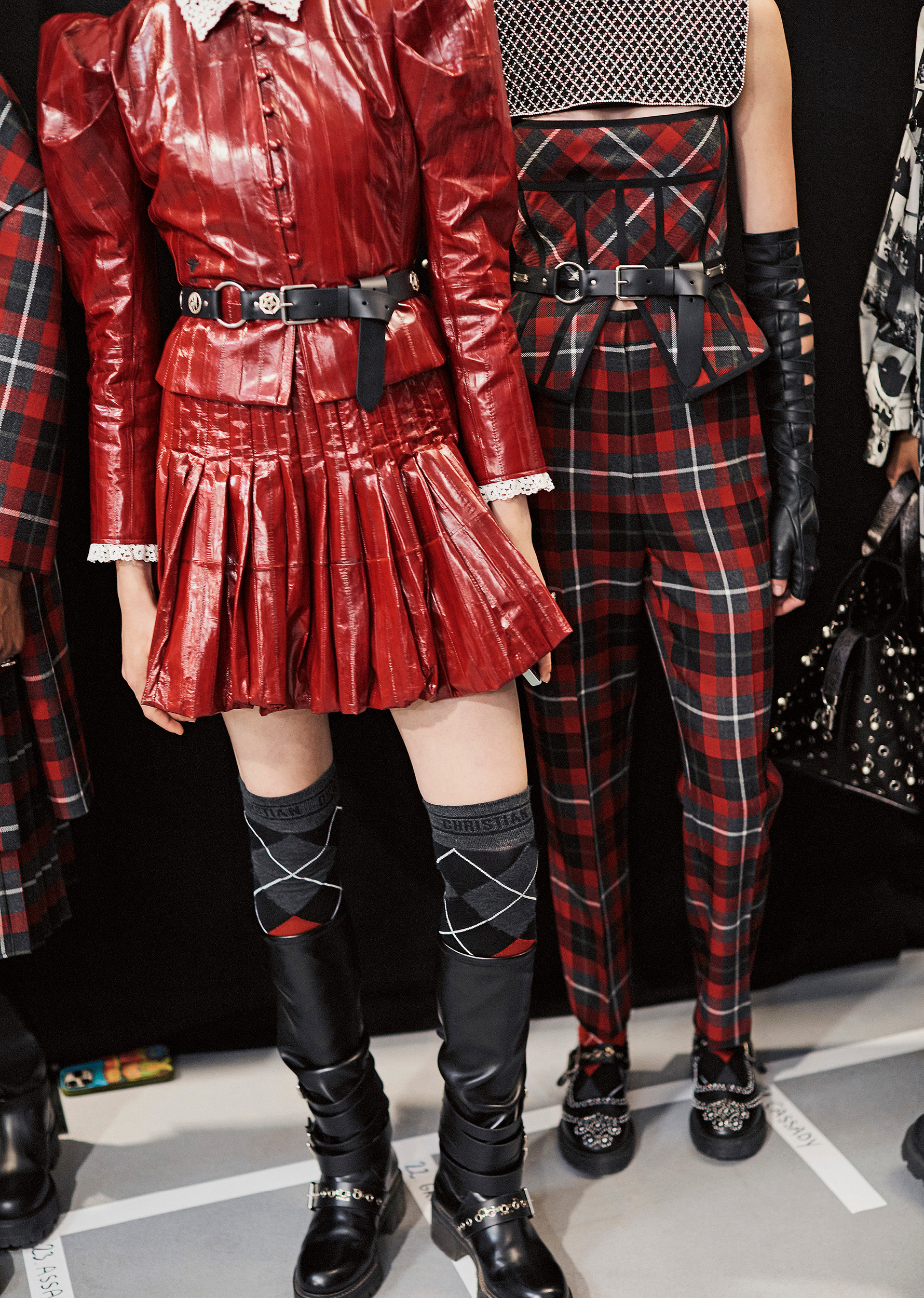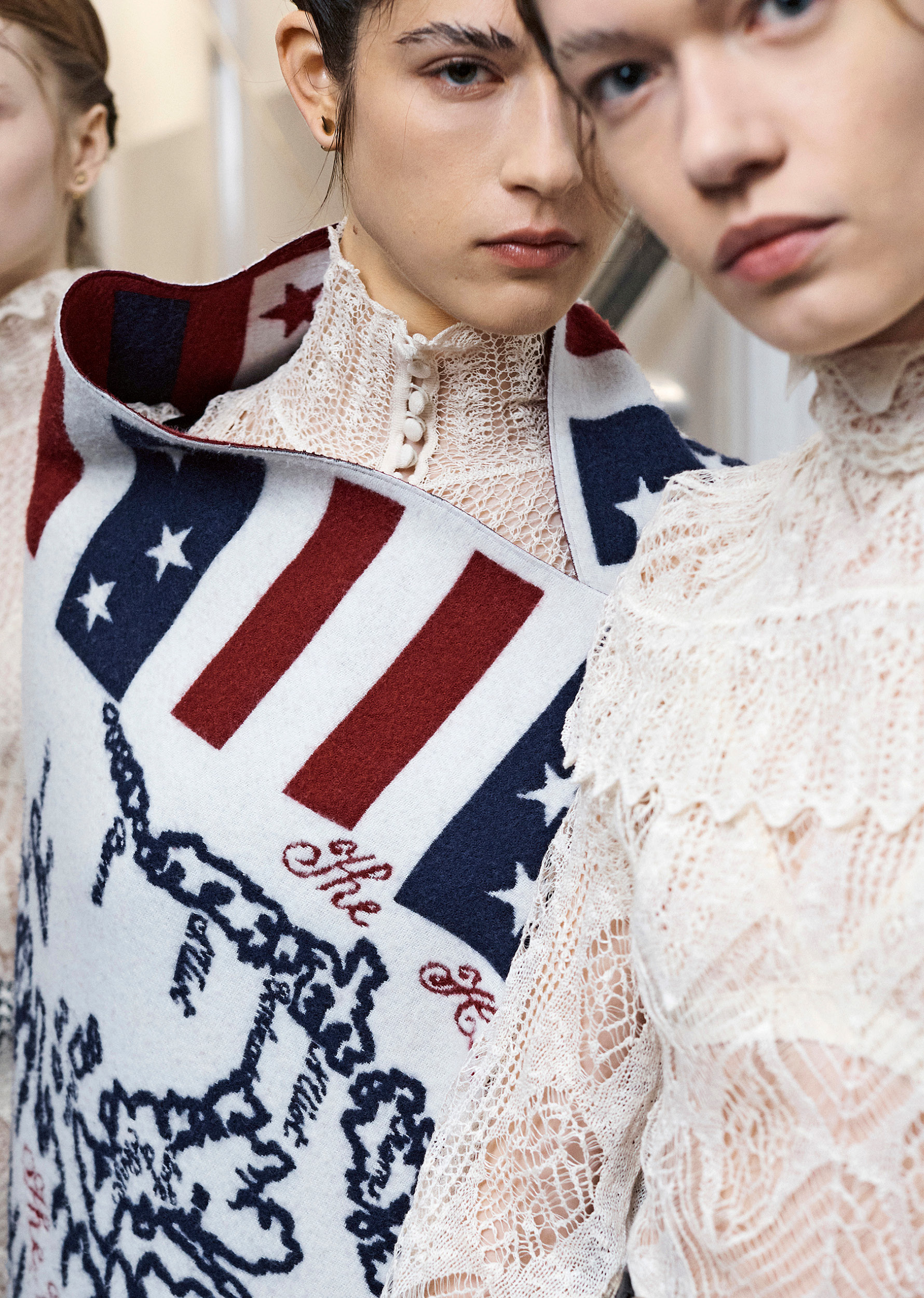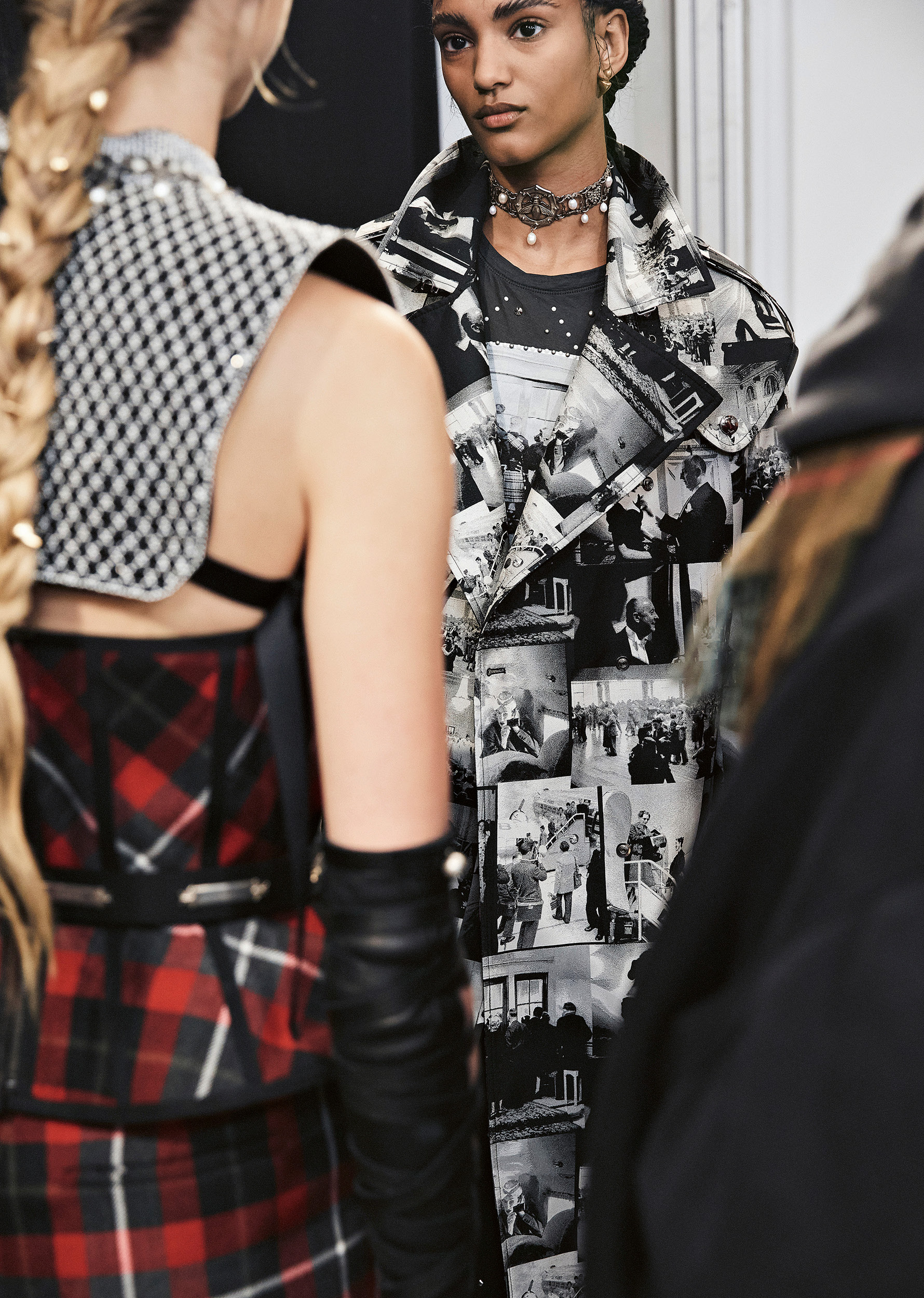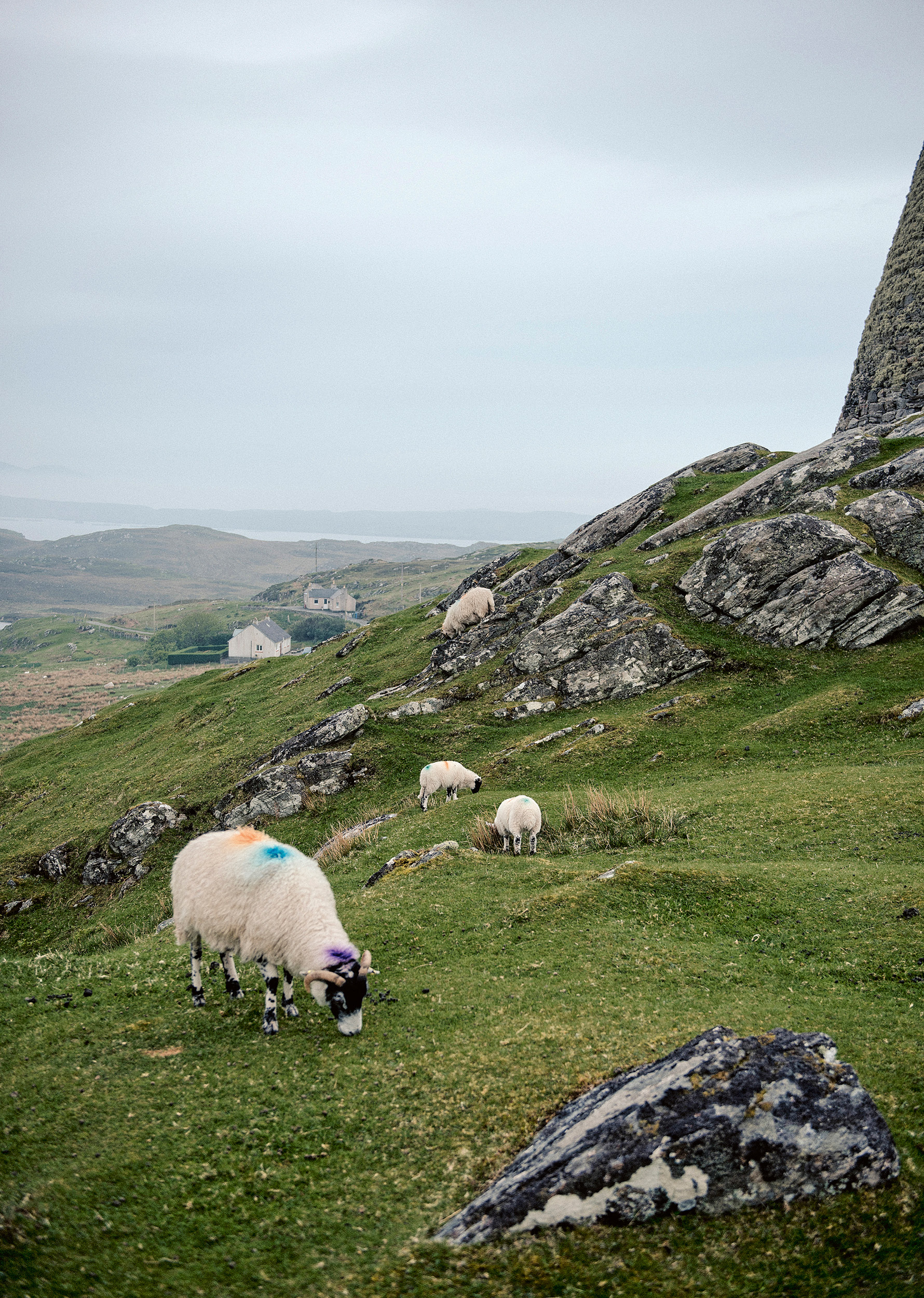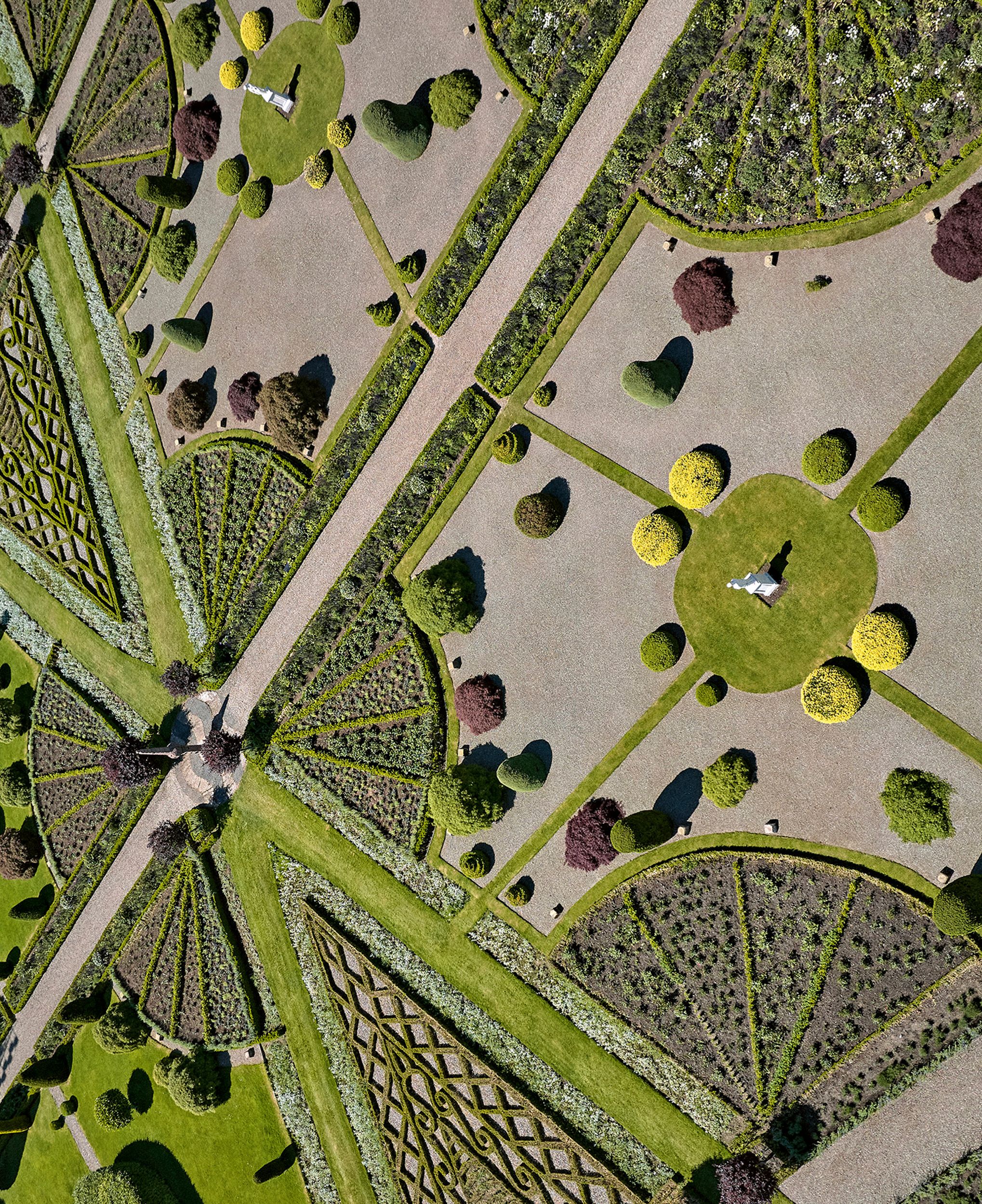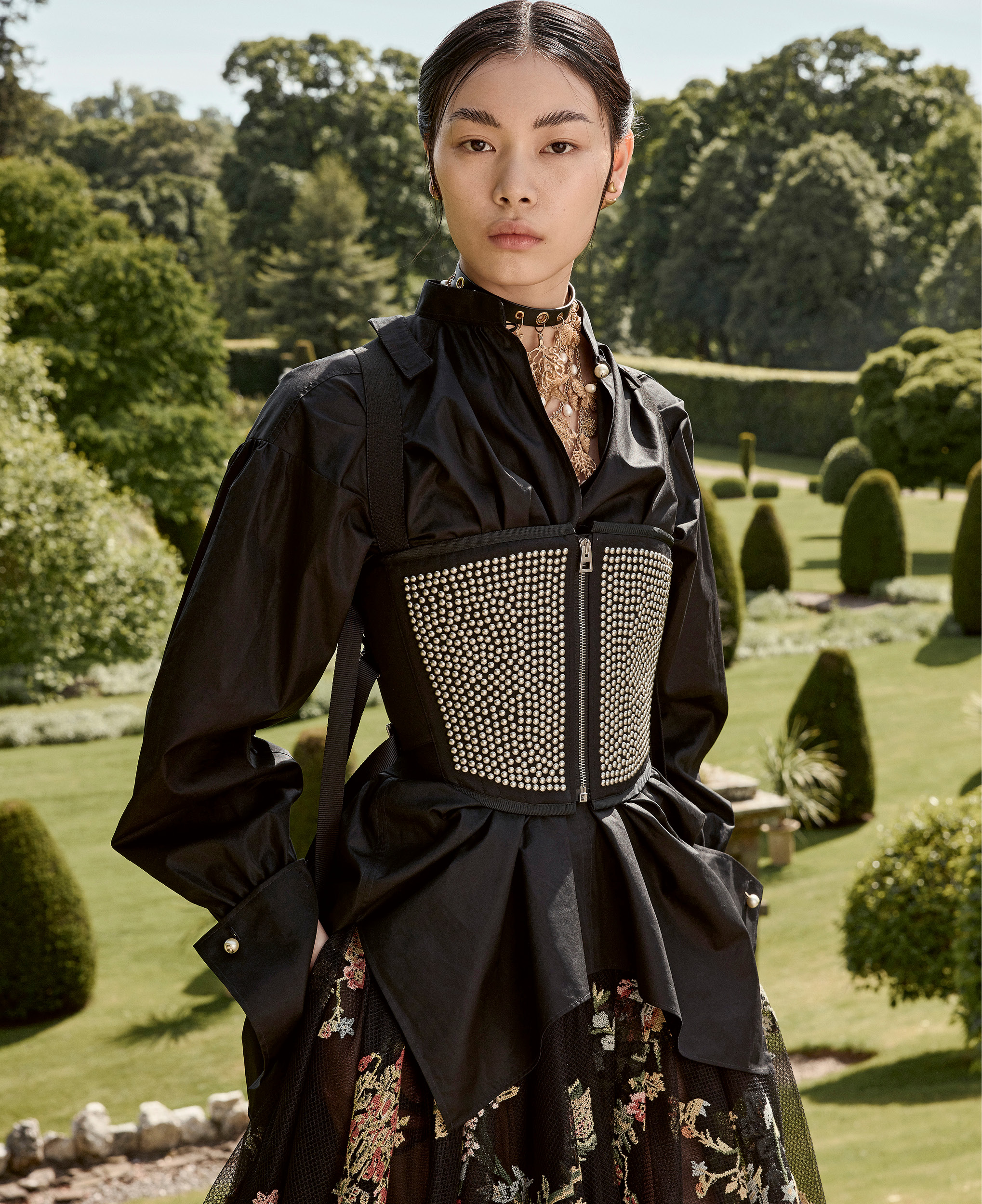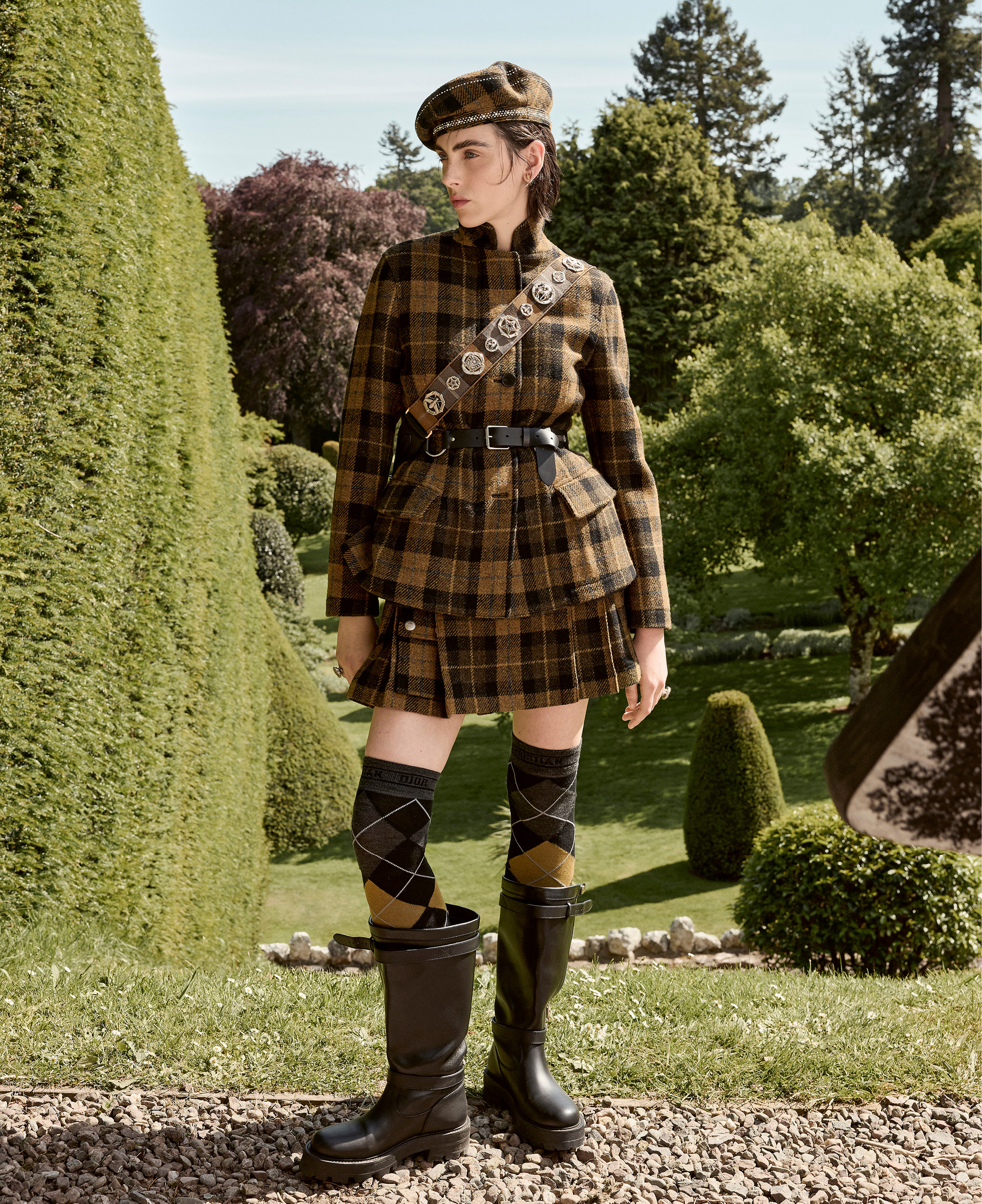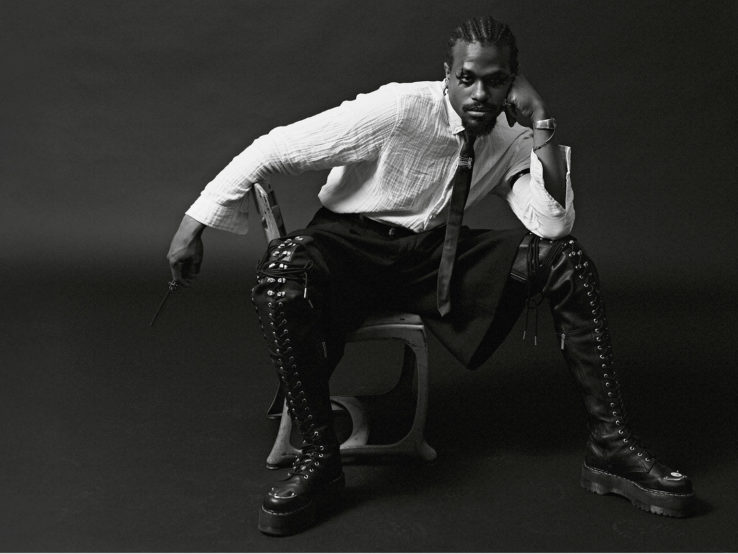M. These days, many brands are returning to their state of nature, to their DNA. How would you define Dior’s identity in 2024?
J. P. It’s very faithful to Christian Dior’s own vision, in the wake of the traumas of the Second World War. Monsieur Dior’s genius was to create a sense of hope, of magic, in the midst of a dark period – and it seems to me that the House is perpetuating this mission.
M. G. C. I’m in favor of a certain kind of consistency, but my convictions and my commitment to giving power back to women have led me to turn the “flowerwomen” of Christian Dior’s era into horticulturists, so to speak. In other words, subjects with agency, rather than aesthetic objects.
M. Since your first day at Dior, you’ve carried a feminist message. Do you think fashion still has the power to change people’s mindset?
M. G. C. Fashion is a social phenomenon intrinsically tied to our way of thinking, so yes, I’m sure it does! Wearing a certain style of dress, a certain color, a certain t-shirt will always be a conversation starter.
M. You both are women with successful careers in fashion. What are the perks of being a woman in your experience?
M. G. C. Our ability to identify with other women, perhaps. When I was little, I used to watch my mother run her sewing business, it was the moment I became aware not only of their needs and aspirations, but also of the role of clothes and fashion in general . I’m also an author, and I think you can also have a female gaze. This is reflected in Justine’s words about Catherine Dior.
J. P. As a woman, mother and grandmother, I feel I have a natural clairvoyance. I try to support the people I work with by drawing on a similar outlook gained from my various roles as sister, daughter, friend… The other advantage, let’s be honest, is that as a woman we’re able to manage several tasks at once.
M. Last year, a number of designers either left their positions or were dismissed. Strangely enough, all of them were replaced by young cisgender men. Is the fashion industry still sexist?
J. P. Personally, I’m shocked that so few women currently hold positions of creative or executive responsibility in this industry. There were more women designers and creators in the 1920s than today: Coco Chanel, Jeanne Lanvin, Madame Grès, Jeanne Paquin, Louise Boulanger, Madeleine Vionnet, Elsa Schiaparelli, to name but a few. It would seem that, in the fight against sexism, we’ve turned back the clock – at least on this particular issue.
M. G. C. I’m still referred to as Dior’s first female artistic director. I’m very honored and happy about that, but I find it a little surprising to be defined by my gender and not by my experience or the legitimacy I’ve acquired through my past achievements. At the same time, I believe that this opportunity I’ve been given is a way of showing that the industry is capable of choices like this. I really hope to see it happen more often!
